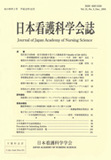Japanese
English
- 販売していません
- Abstract 文献概要
- 参考文献 Reference
- サイト内被引用 Cited by
要旨
この研究の目的は,Mullerの愛着モデルを用いて,母親の内的ワーキングモデルと児への愛着との関連を検討するために,母親の内的ワーキングモデルをタイプ分けし,各タイプ別に胎児および乳児への愛着を検討することである.
妊娠後期から産後1ヶ月の母親を対象とした短期縦断調査を行った結果,
1)妊娠後期の胎児愛着得点と乳児愛着得点との間に中等度の相関が認められた.
2)母親の内的ワーキングモデルを安定型,不安定型,回避型の3タイプに分類すると,安定型の母親は他タイプの母親に比べ胎児への愛着得点が有意に高かった.
3)安定型の母親は胎児愛着得点と乳児愛着得点との間に強い相関が認められた.不安定型,回避型の母親の胎児愛着得点と乳児愛着得点の相関は低かった.
以上の結果より,Mullerの愛着モデルに関し,母親の内的ワーキングモデルと胎児および乳児への愛着との間に関連があることが証明された.内的ワーキングモデルは,愛着の世代間伝達の問題を考えていくうえで重要な概念の一つであるが,これは出産後のみならず妊娠期から考慮すべき概念であると考えられる.
Abstract
The aim of this study was to investigate the features of perinatal attachment according to each type of internal working models, for determine whether a relation exists between the mother's internal working models (IWMs) and perinatal attachment by using the Muller's attachment model.
A prospective study was performed with data collected during the third trimester of pregnancy and 1 month after delivery, and the following results were obtained.
1) There was a modest correlation between prenatal and postnatal attachment.
2) Mother's internal working models are classified into 3 types: Secure, Ambivalent and Avoidant. The prenatal attachment score of the secure type mother was significantly higher.
3) In the secure type mother, there was a strong correlation between prenatal and postnatal attachment. In ambivalent and avoidant type mothers, the correlation between prenatal and postnatal attachment was week.
The results demonstrated a relation between the mother's internal working models and perinatal attachment in Mu"ller's model. IWMs is one of the key concepts in assessing the subject of inter-generational transmission of attachment, IWMs must be considered not only postnatally but in the prenatal period as well.
Copyright © 2001, Japan Academy of Nursing Science. All rights reserved.


